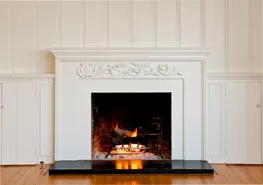Did you know that 90% of American homes are currently under-insulated without their homeowners even realizing it? That’s because local insulation requirements often remain a mystery, leaving homeowners to wonder exactly what areas need insulation in their homes and how much.
In this blog post, we’ll discuss what the local insulation requirements are for Miami homes and which parts of the home are most important to insulate, so you can ensure your property remains as energy-efficient and comfortable as possible.
Summary of Insulation Requirements in Florida
Before we dive into the specific insulation requirements for Miami homes, it’s important to understand how insulation is measured. Insulating power, or R-value, is a measurement of the thermal resistance of an insulative material. The higher the R-value, the better the insulation.
There are different insulation requirements for homes depending on their geographic location and the specific area of the home they plan to insulate.
Here in Southeast Florida, families must satisfy these insulation requirements to ensure their homes are up to modern energy-efficiency standards:
- Framed walls: Must meet or exceed R-13
- Block walls (interior): Must meet or exceed R-7.8
- Block walls (exterior): Must meet or exceed R-6
- Ceilings: Must meet or exceed R-30
- Raised floors: Must meet or exceed R-13
While R-value is an important consideration to keep in mind when insulating your Miami home, it’s just one of many factors to weigh. For instance, some insulation materials respond to weather conditions differently, which may impact your decision.
Traditional batt insulation, for example, can experience reduced efficiency during high winds — a particular concern during hurricane season. Consult with a knowledgeable insulation specialist to weigh your options carefully and select the right materials for your home.
Most Important Areas of Your Home To Insulate
In addition to complying with local insulation requirements, homeowners must consider which areas of their home need the most attention when it comes to preventing unwanted thermal transfer.
These are just some of the most important areas of your home to insulate:
1. Attics
Insulating the attic is an important place to start when addressing issues of thermal transfer. Without the right attic insulation installed, warm air can escape through your attic during winter, making your home less comfortable.
During summer, hot air from outdoors can compromise your comfort, getting into your attic and making your air conditioner work harder than it should.
Insulating your attic can enhance your home’s energy efficiency and help ensure an even, reliable temperature indoors, reducing the strain on your HVAC systems and lowering your utility bills as a result.
2. Basements
A properly insulated basement is a great way to manage temperature and moisture levels in the low areas of your home. By ensuring your basement walls and floors are well-insulated, you can protect against cold, damp conditions that can lead to mold growth, structural damage and general discomfort.
If you have a finished basement, adding more insulation to the space can help enhance its functionality as you enjoy consistent, even temperatures in your extra living space.
3. Ceilings
Ceiling insulation (or attic floor insulation) is especially important for preventing heat transfer between your living areas and your attic. Just like an improperly insulated attic, poor ceiling insulation can result in warm air escaping during winter and getting in during summer, resulting in greater indoor discomfort and higher utility bills.
If you have a multi-story home, a properly insulated ceiling can also help reduce noisiness between levels, giving your living spaces an added sense of tranquility and privacy.
4. Floors
Insulating your floors — especially above crawl spaces, basements and garages — can go a long way in reducing energy costs by preventing unwanted thermal transfer.
Flooring insulation can help reduce draftiness, maintain proper moisture levels and minimize the strain on your HVAC systems by retaining heated and cooled air.
5. Walls
Exterior walls are a primary source of heat transfer between your interior space and the outdoors. A well-insulated wall offers a thermal barrier, preventing unwanted heat loss during winter and heat gain during the hot, humid Miami summers.
As a result, you’ll enjoy lower utility bills for your home, reduced draftiness and improved indoor comfort.
Trust Your Home’s Insulation to the Experts at IBP Miami
Want to enhance the insulation in your Miami home? Trust the experts at Installed Building Products of Miami to help match you to the right materials.
With over 30 years of experience, our insulation specialists are well-versed in local building codes and regulations, making us uniquely capable of ensuring your home gets the high-quality thermal protection it deserves.
Get a free insulation installation estimate for your Miami home today by calling (305) 929-8657(305) 929-8657.




